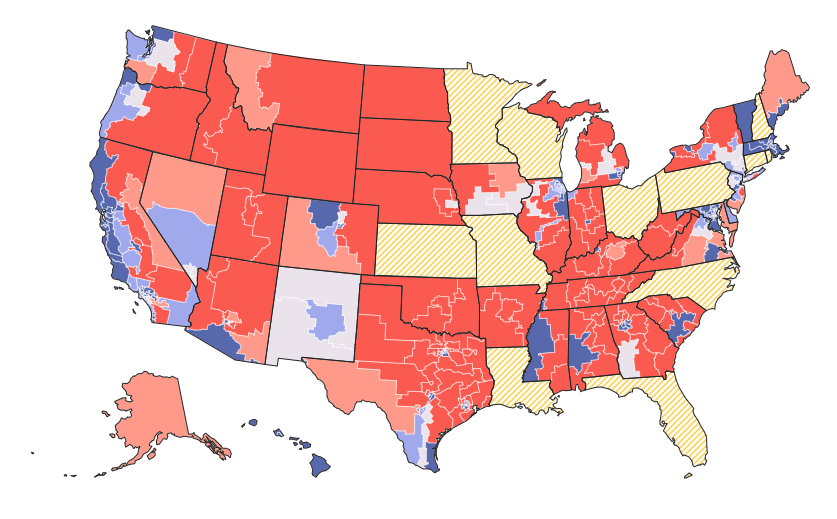Redistricting Pt. 2
Redistricting in the US
February 9, 2022
FiveThirtyEight has some graphics that are too good to pass up, and I’ll pick some of the most meaningful to display here. If you’d like to explore the site for yourself, remember that the links are always down at the bottom. One last thing: if you haven’t read my previous article about redistricting, I suggest doing so before reading this one.
That out of the way, if you get anything important to take away from this article, let it be this: US House districts are being gerrymandered to provide safer seats for incumbents and is contributing to polarization. The states that I’ll highlight are Texas, Ohio, and Michigan.

Here, the Texas State Legislature is packing, meaning they place high concentrations of (in this case, Democratic) voters into a few districts so that there will be significantly fewer in the majority of districts. According to analysis done by FiveThirtyEight, “The map shores up a number of Republicans who currently sit in light-red seats that have been trending toward Democrats, including Reps. John Carter, Dan Crenshaw, Jake Ellzey, Michael McCaul, Troy Nehls, Chip Roy, Van Taylor and Beth Van Duyne. It accomplishes this largely by packing the bluest parts of the Houston, Dallas and Austin suburbs into Rep. Lizzie Pannill Fletcher’s 7th District, Rep. Colin Allred’s 32nd District and the newly created 37th District and conceding these seats to Democrats.” By making districts considerably more easy to win, it only helps to worsen divides between one congressional seat and another.

One of Ohio’s proposed maps showcases another way to successfully gerrymander seats. Instead of packing, the state legislature gerrymandering by cracking. For example, the two largest cities in Ohio are Columbus and Cleveland. While the cities them self are very democratic-leaning, the suburbs that surround them also contain a majority of democrats. To crack the suburbs of Columbus, it was separated among three districts with strong republican majorities. If you’d like to see more examples of cracking, check out how Tennessee split Nashville into three separate districts.


Of course, not all states choose to do this. While Michigan’s former map (left) contained only two competitive seats and had a high efficiency gap of 11.7, the new map (right) now has three competitive seats and the state’s efficiency gap is down to 0.3 (literally probably impossible to get any lower).
See:





